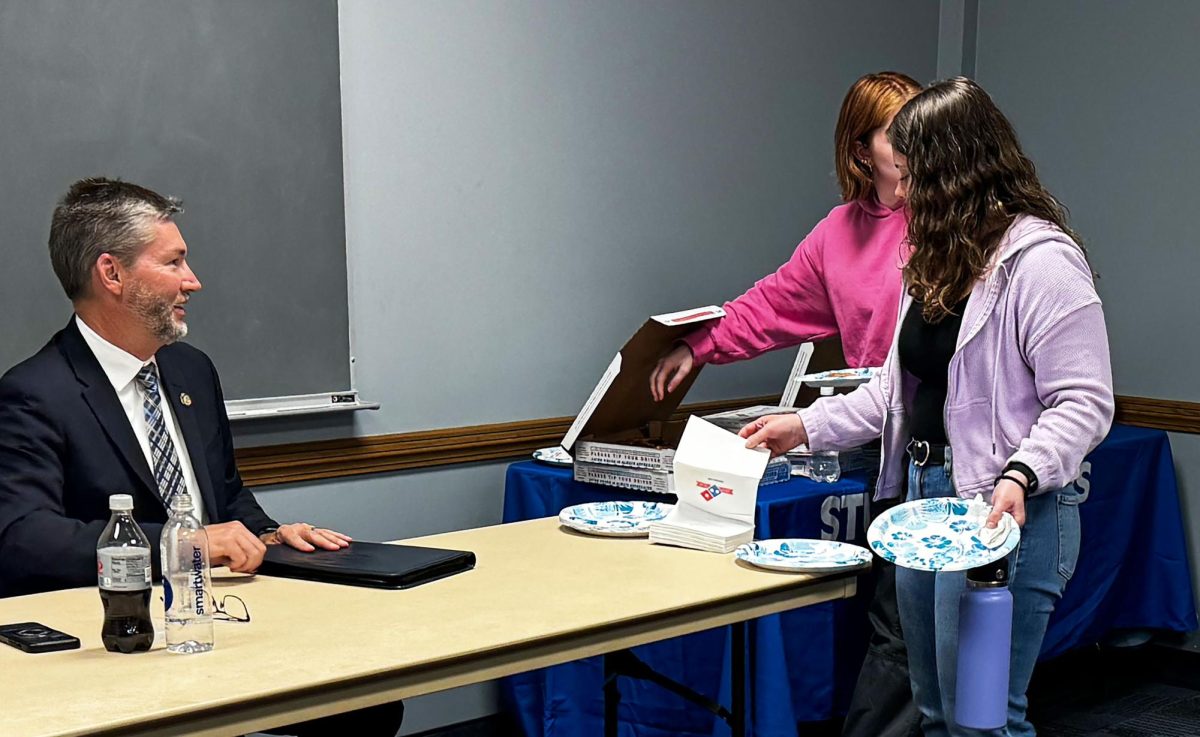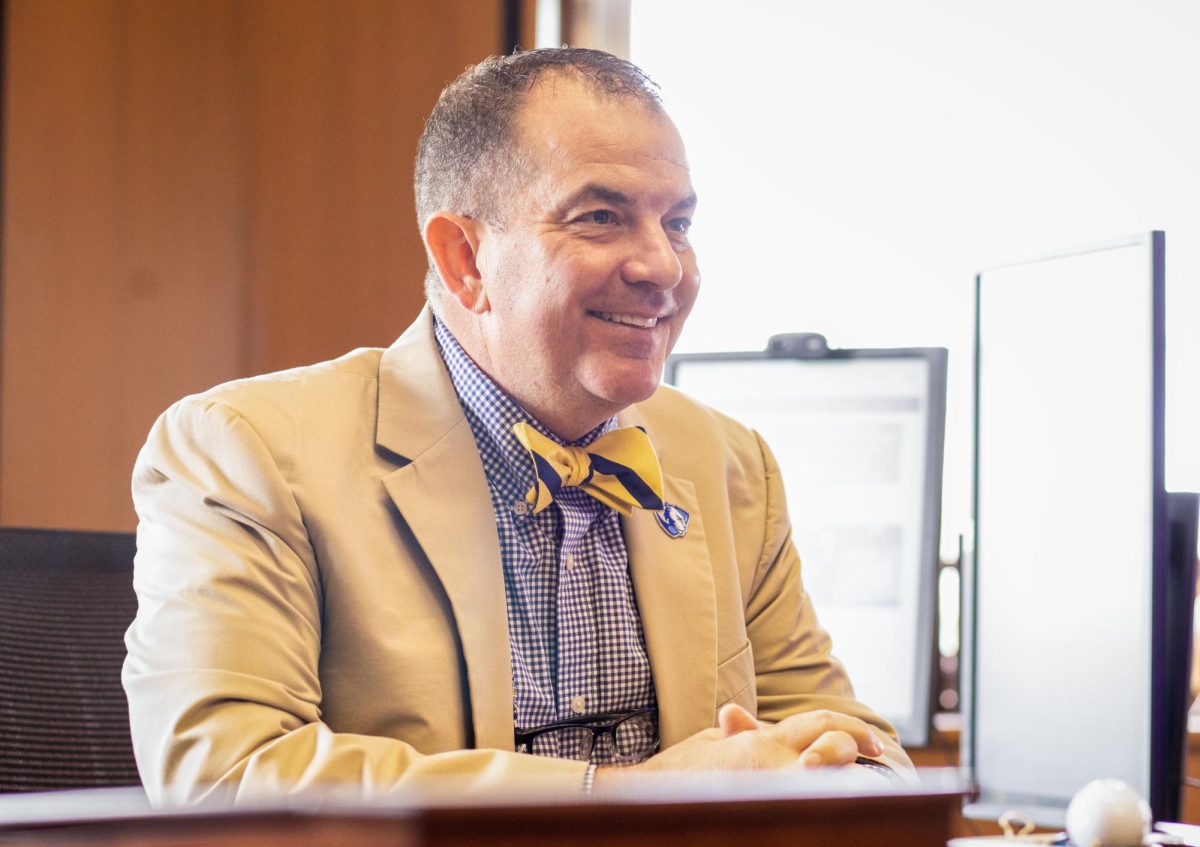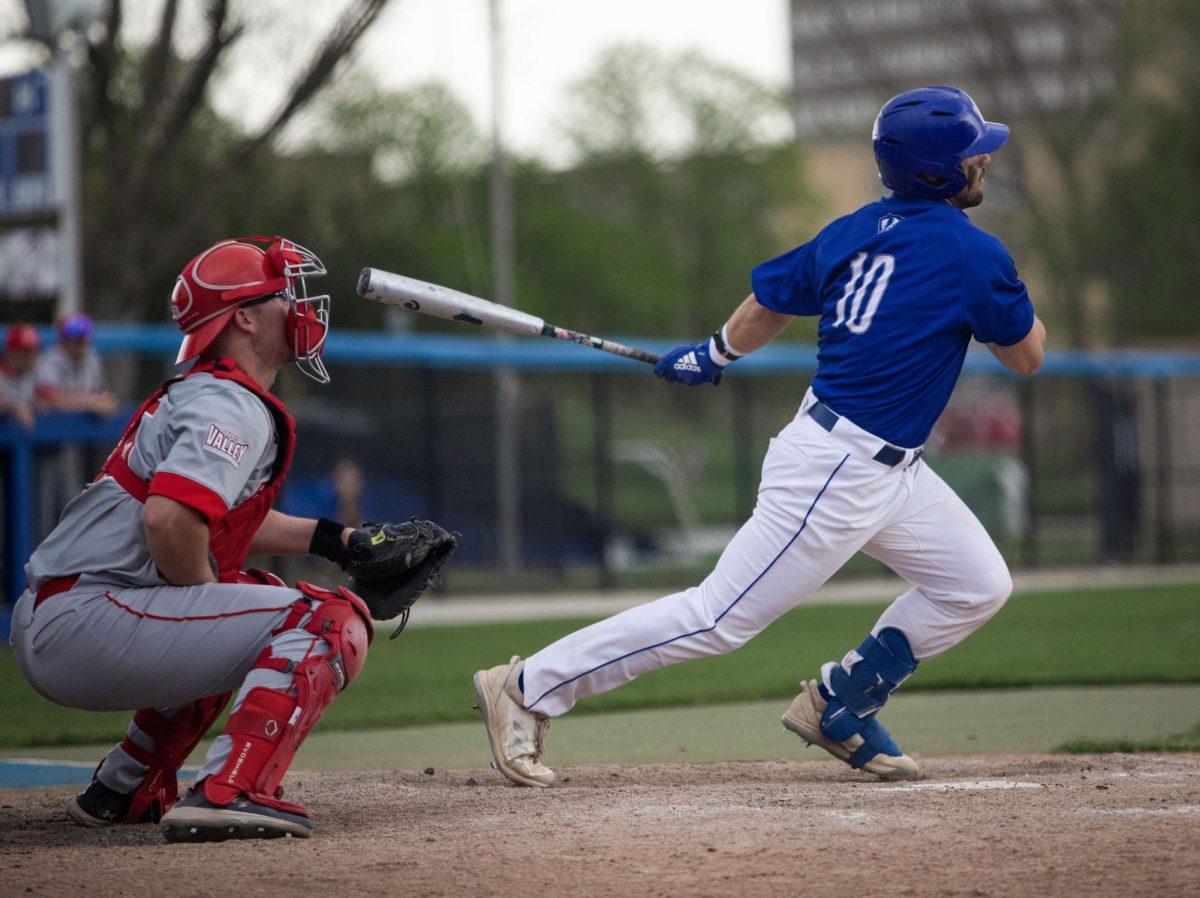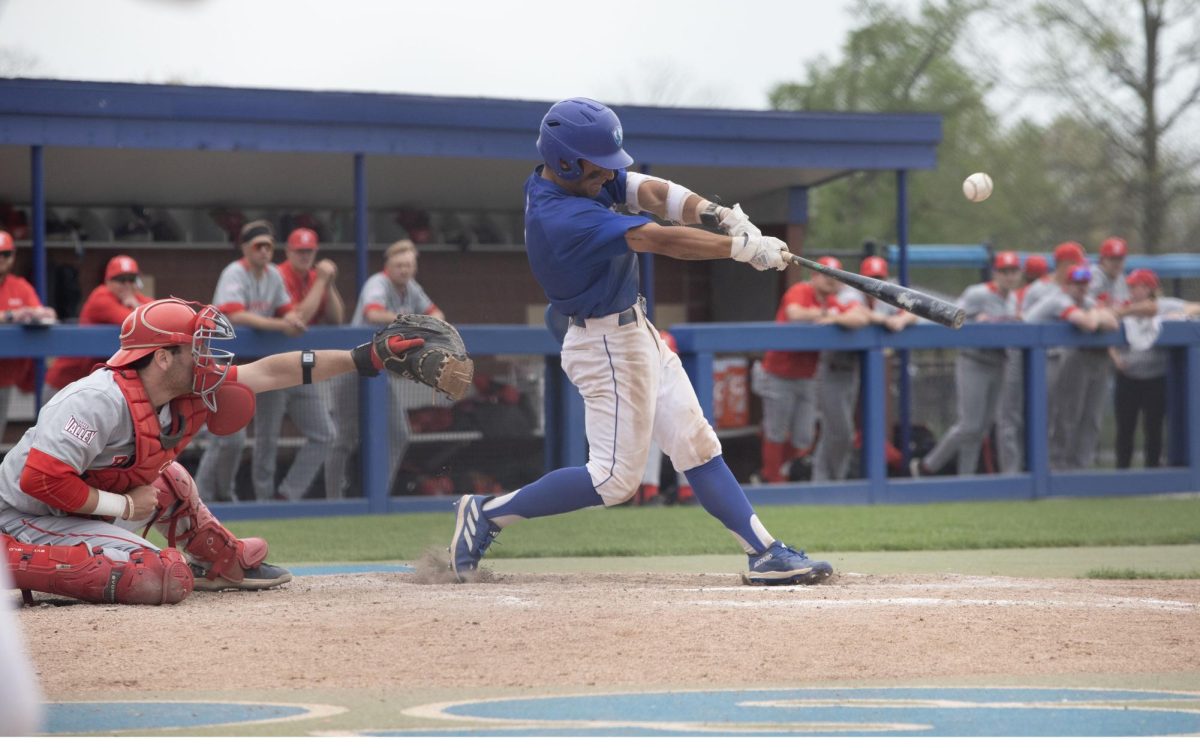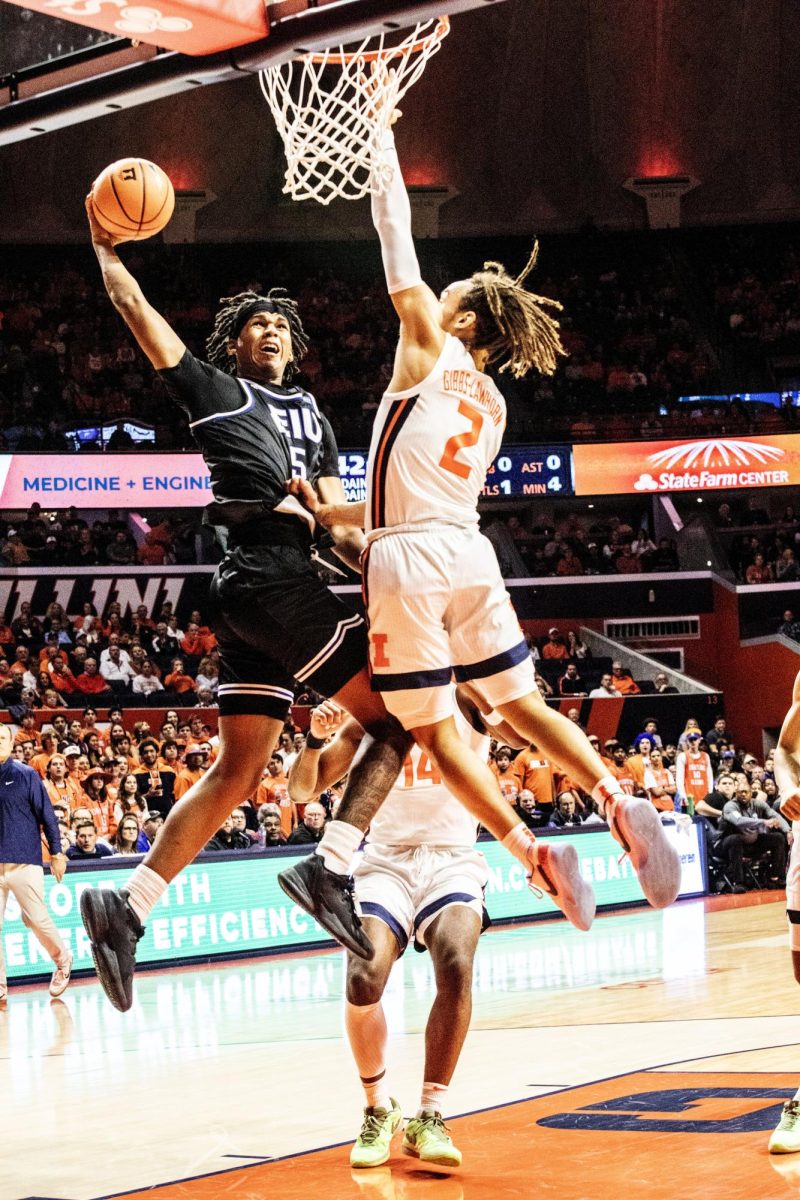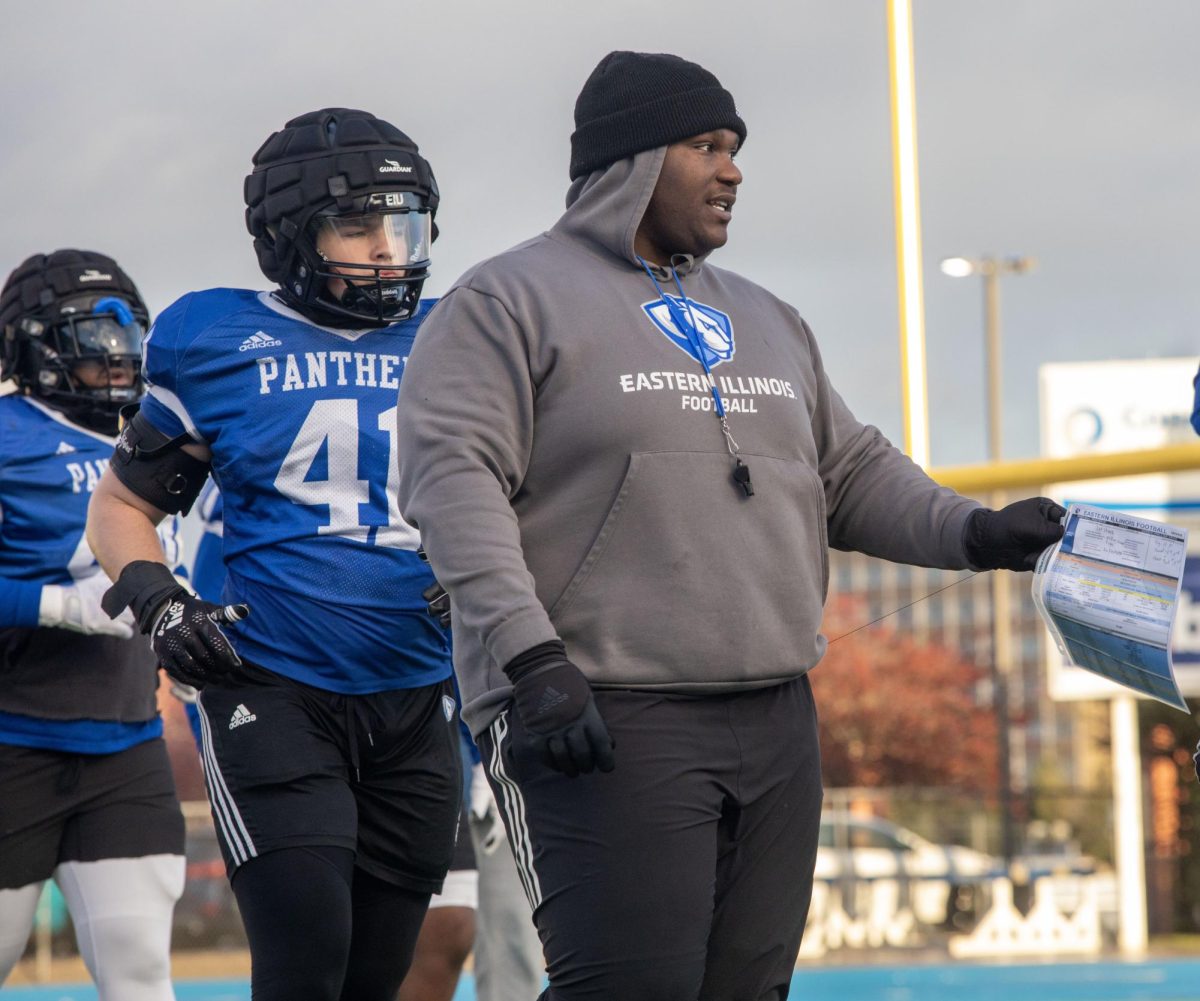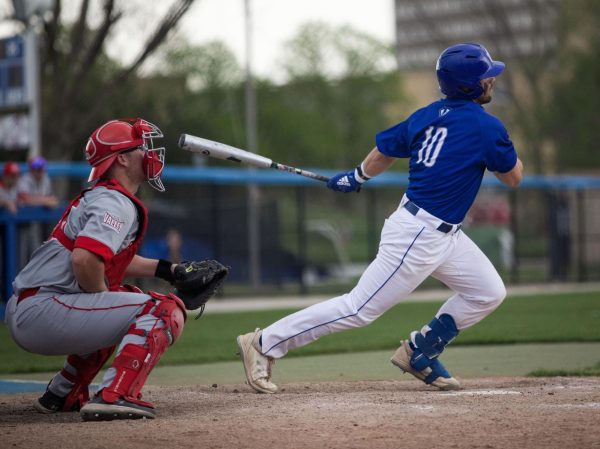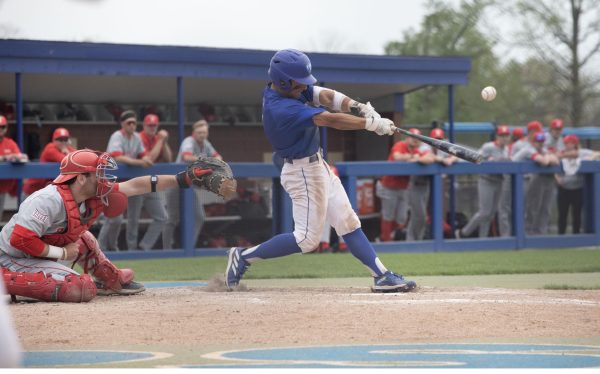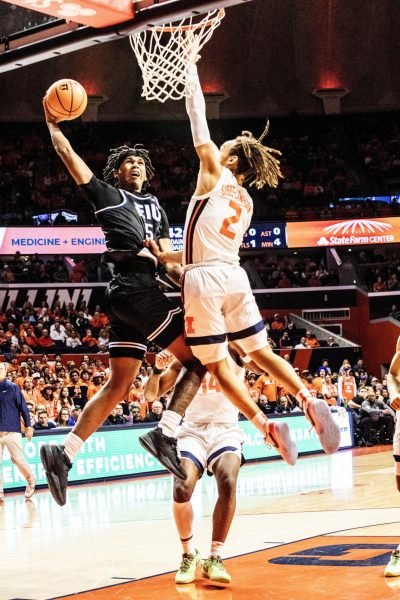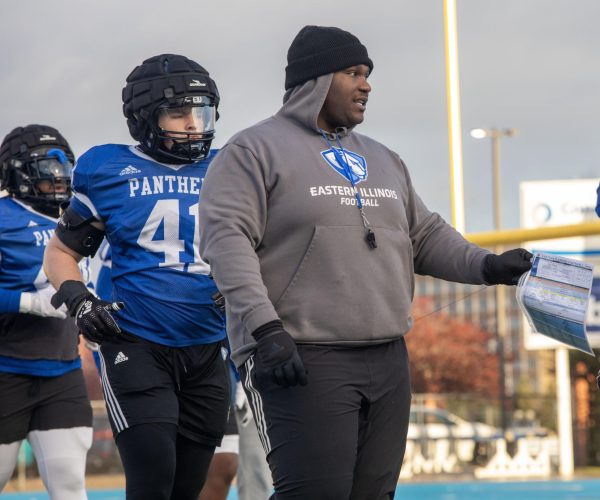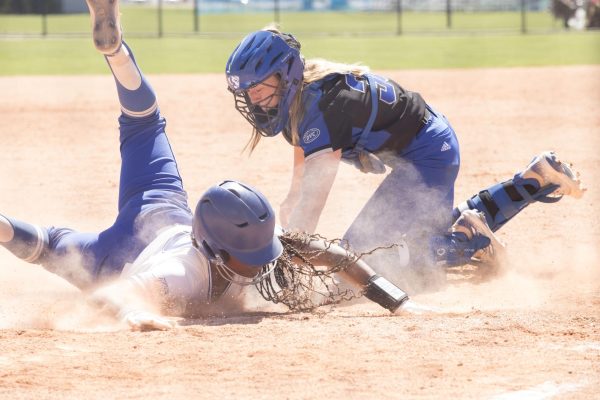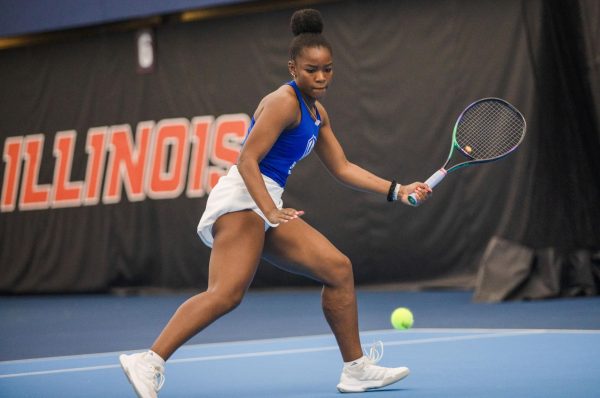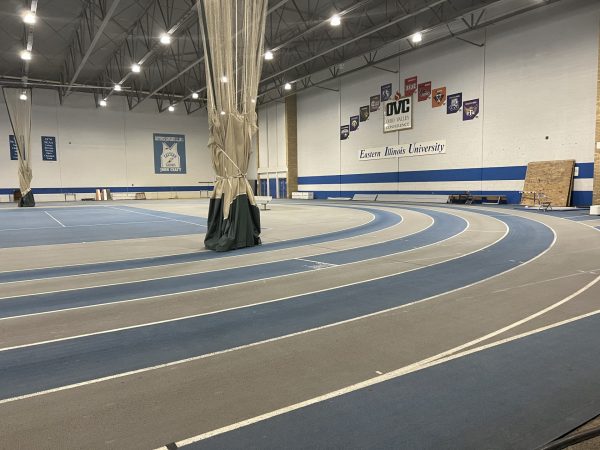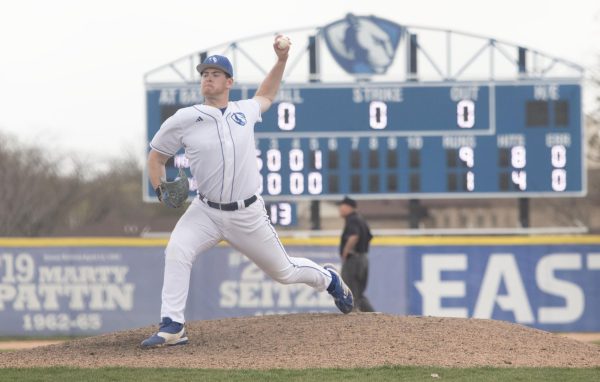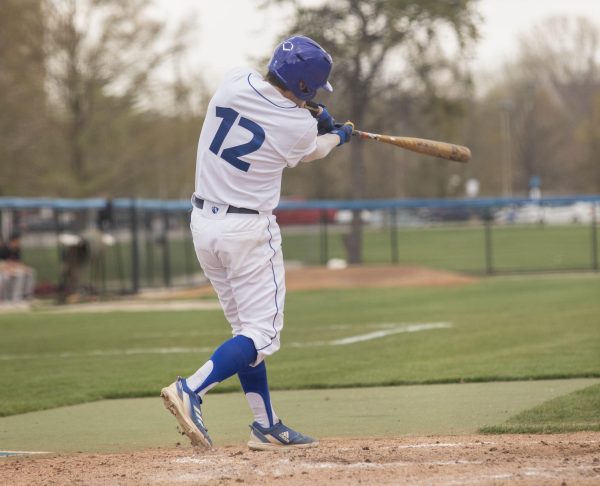Athletes fight through pressures of anxiety
April 30, 2018
When spectator-induced hysteria fills the upper and lower bowls to the brim, athletes are tasked with the challenge of improvising their craft under trialing circumstances.
The free throw, field goal and serve attempted on countless occasions in practice, takes on new form.
This inimitable situation cannot be replicated through training or game time rituals.
Freshman D’Mitri George, who plays defensive end for the Eastern football team, does not look back on his high school track meets too fondly. One track event in particular, hosted by Portage high school, where George attended-intimidated the future 6-foot-3 redshirt freshman who, at that time, was readying himself for a 16-meter race.
“I almost felt like I was going to vomit right then and there, but I didn’t think god,” George remembers. “It was after the race that I did,” he said.
He gradually became more proficient at the sport as he moved up through the high school ranks.
The pressure to perform, however, never left him. Although his senior year of track had been his most fruitful season yet, the anxieties did not elude him, as he still felt engulfed by a burden to perform at an elite level.
The panic attacks, shortness of breath and queasiness became a pregame routine.
“I was forgetting stuff,” George said ruefully. “I was like ‘oh my gosh I forgot my spikes’ and I would look down and I would be like “They are on my feet.”’
But this was the D’mitri George of yesteryear. Deciding to focus all of his efforts on football by the time he enrolled at Eastern, George managed to thwart these tendencies.
“For football its entirely different because you make a mistake, you have another chance to try to make up for it,” George said. “But in track it was completely one and done.”
His football teammates, George added, have played a vital role in decimating these stressors at the college level. This is due in part to their ability to combat their own troubles with anxiety, George believes.
Senior Anne Bahr, a member of the Eastern women’s golf team, would not go as far as to suggest that she experiences sports performance anxiety, but has nonetheless felt the tension gnaw at her in the course of a decisive moment. That said, her adversities have been rather specific to her sport.
“I would say it’s tough, especially with golf it’s such a solo game and it’s such a mental game,” Bahr said. “It can get to you. You can definitely fail miserably. I would say that I have gotten a lot better over the last four years. Like last fall, I had one really good round and definitely felt the pressure at the end, but I was able to hold it together and finish strong,” Bahr said.
As athletes persist in spite of their indelible shortcomings, they must conform, with an end goal in mind, to a specified routine.
Before tackling the issue, a trainer or psychologist will set out to determine the underlying concern. An athlete’s struggles can, at times, be difficult to pinpoint, questions only the athletes themselves can ascertain.
“We want them to be visualizing a successful experience or a successful technique,” Chelsea Duncan, a kinesiology professor at Eastern said.
Just as each athlete manufactures a unique set of skills, the enduring complications are also distinct. No one technique works for every athlete. Duncan said that they work with athletes on a case-by-case basis.
“So seeing themselves make the free throw or making a successful pass rather than focusing on the negative of missing the free throw,” she said.
Athletes, she said, are tasked with a fairly difficult objective: to reflect on the performances in which they performed well, while applying the very thought process behind such achievements to the present moment.
Anxiety disorders—an issue that has 85 percent of athletic trainers on college campuses concerned, according to the NCAA—are just one of a number of factors that hamper student athletes. Other pervasive challenges include a lack of concentration or self-doubt.
While positivity reigns in this practice, sports psychologists often ask athletes to retrospectively examine past failures, with the intention of determining the source of its manifestation.
“It’s also possible with anxiety or losing concentration or focus-maybe they tend suffer from that after something negative happens,” Duncan said. “So sometimes after they miss a free throw or they miss a pass, we see their performance go down. So one other reason why we might have them use imagery to look at a negative performance is to actually practice being focused after that happens.”
Therapeutic approaches, including self-talk, visualization and bio-feedback training can be applied to any sport, though the strategies are typically tailored to adjust to the obvious differences between them.
When approaching the pivotal putt or final drive, Bahr has cultivated, over the course of nearly four years as an Eastern golfer, a positive internal voice.
“Mainly to trust myself and trust my practice and know that I can do it,” Bahr said.
Every team will encounter the atmospheric pressures unique to a closely contested competition, especially the clock itself, which lends an extra set of hands to the team on top. Case in point, nine of the Eastern men’s basketball games this past season-over one fourth of the total played-came down to four points or less.
The team, which finished the season in the eighth and final playoff spot, came on top in four of those games, not to mention an OVC Tournament matchup that came down to one possession against Tennessee State.
Athletics, of course, are not only a competition between two opposing teams, but also an inner struggle between positive affirmation and the dissenting doubt. But more than just the sport itself, a new mindset has settled in for George. Positivity, in his case, gets the final nod.
“All week I have been preparing for this specific team, we basically have everything set out in front of me,” George will remind himself. “So basically it’s just for me to go out there and do what I need to do to be able to perform like I am supposed to.”
Tom O’Connor can be reached at 581-2812 or [email protected]




